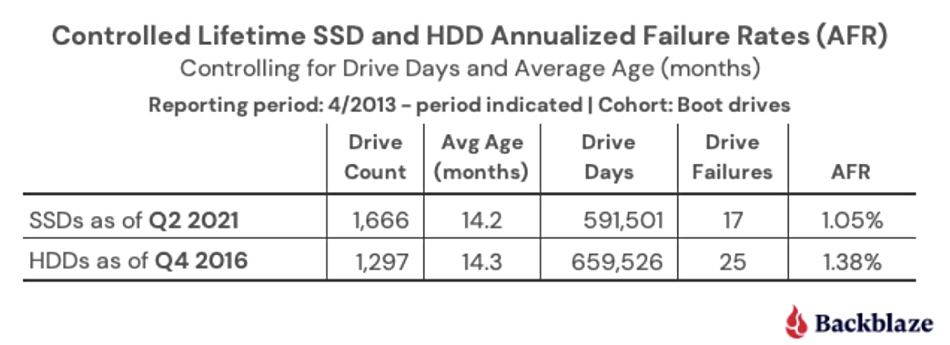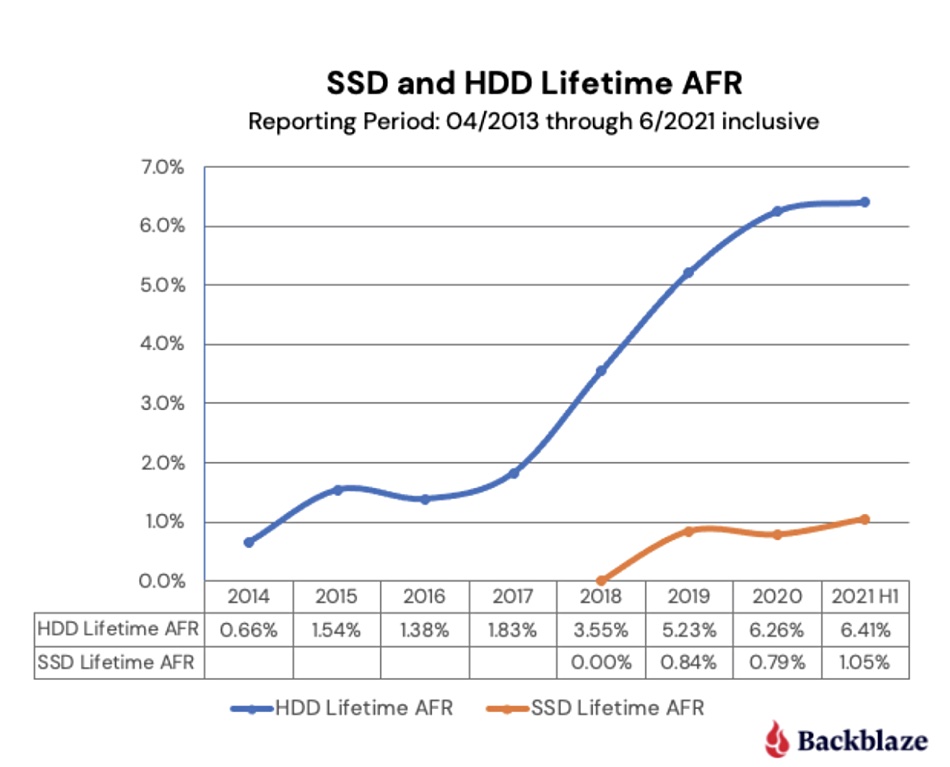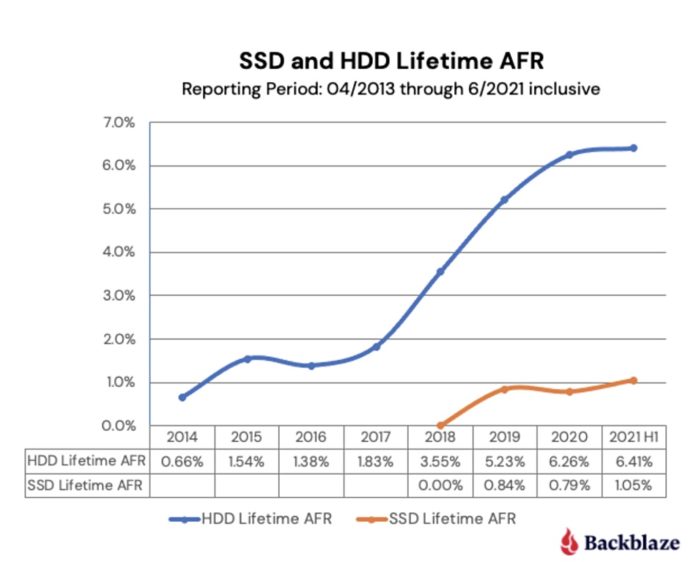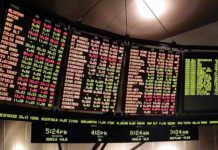Cloud backup and data storage provider BackBlaze is finding its SSDs fail at nearly the same rate as its disk drives at the equivalent stage in their life cycle.
A Backblaze blog by Andy Klein, its oddly titled Principal Cloud Story Teller, outlines how Backblaze used to boot its systems off disk drives and then started using SSDs instead. It monitors its disk drive reliability and does the same for its SSDs, so it can compare their failure rates. To make the comparison fair, it compared the SSD failure rates to the HDDs used for boot drive duty at a similar age in their life cycle and found similar failure rates.
Klein wrote: “Where does that leave us in choosing between buying a SSD or a HDD? Given what we know to date, using the failure rate as a factor in your decision is questionable. Once we controlled for age and drive days, the two drive types were similar and the difference was certainly not enough by itself to justify the extra cost of purchasing a SSD versus a HDD. At this point, you are better off deciding based on other factors: cost, speed required, electricity, form factor requirements, and so on.”
Here’s the tabulated Backblaze summary data:

The SSDs did fail less often than the HDDs — with a 1.0 per cent annual failure rate as opposed to 1.38 per cent for the disks. Then Klein charted the data over time to see what the curves looked like:

There’s an uncanny resemblance in the shape of the two curves. However the HDD curve steepens substantially after four years of deployment. So the big, big question is whether the SSD curve will do the same thing. We guess we’ll see in October 2022, so long as Andy Klein puts the data out for us all to see.








